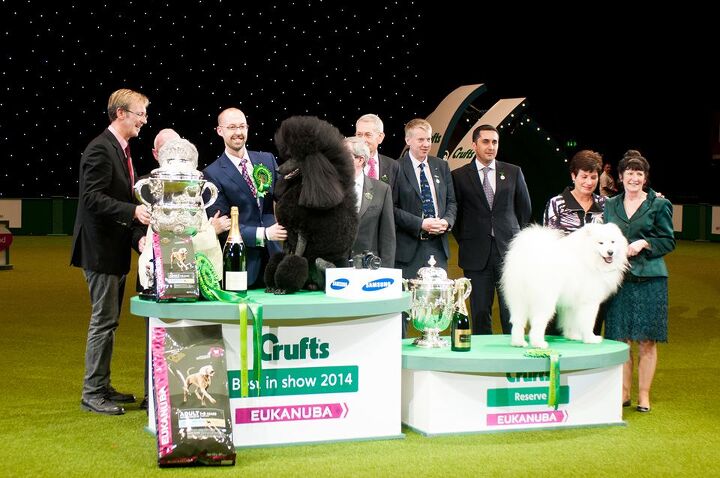8 Fancy Facts About the Crufts Dog Show

Every year, the Crufts dog show draws thousands of competitors and spectators, not to mention a huge television audience. The Crufts dog show has been held once a year for over a century and it is the perfect opportunity to showcase your dog and his special talents. It is also a great place to learn more about different dog breeds.
What is the Crufts Dog Show?
The Crufts Dog Show is one of the largest dog shows in the whole world, held annually in the United Kingdom. Not only is it a competition, but it is a celebration of all the different aspects dogs play in our lives. The first Crufts show was held in 1891, founded by the late Charles Cruft, and it is currently organized and hosted by the Kennel Club in England. This show lasts for four days and it consists of multiple events occurring at the same time including the main competition for Best in Show. Other events include dog agility, obedience, fly ball, musical canine freestyle and a separate competition bracket for young handlers between 6 and 25 years of age.
Related: The Best In Show Facts About The Westminster Dog Show
Fun Facts About Crufts
The Crufts Dog Show is just a little bit different each year depending on the competitions offered and the dogs that enter those competitions. One thing remains the same, however – it is a fun show each and every year. To help you learn a little bit more about this wonderful show, we’ve listed our top 8 fancy facts about the Crufts Dog Show:
- The Crufts dog show has always drawn some royal attention. In fact, Queen Victoria’s collie, Darnley II, as well as two of her Pomeranians, were awarded prizes at the first Crufts show in 1891. In 1897, both the Prince and Princess of Wales also entered dogs in the competition – six in total – and they all won prizes.
- During the 1900 Crufts show, dogs were entered into a new “gift class” and they were sold in order to raise money for the families of soldiers who were serving during the Boer War. During the same time, Charles Cruft advertised a 10% reduction in the cost of dog chains he was selling, on account of the war.
Related: Awesomely Awkward Documentary Features Dogs, Dancing and Kites [Video]
- Following the First World War, there was a special class in the 1916 Crufts show for dogs that were owned by officers and men serving in His Majesty’s armed forces.
- The Best in Show award wasn’t introduced at the Crufts show until 1928 and the first winner was a greyhound named Primley Spectre, owned by a brewery millionaire. The first female winner of the Best in Show award was Countess Howe, whose Labrador Retriever won in the 1932 show.
- The bred to win the most Best in Show awards is the English Cocker Spaniel with 7 wins for the breed. Six of the total seven were claimed by dogs trained by Herbert S. Lloyd between the years 1930 and 1950. Some say that the only reason he didn’t win more was because the Crufts show was suspended during World War II.
- The 1974 Crufts show was one of the most eventful in history. The name of the show lost its apostrophe (going from Cruft’s to Crufts) and the show was featured in a murder trial after a man who started an affair with someone he met at the show was stabbed to death by his wife – she used the same knife that he had used to cut his dog’s food.
- In 1991, there were more than 23,000 entries in the show which earned Crufts recognition by Guinness World Records as the largest dog show on the planet.
- In 2010, the judging of the Gundog Group was interrupted by a streaker. The dog being shown at the time, a Hungarian Vizsla, was not distracted by the display and he went on to win the title of Best in Show that year.

Kate Barrington is the loving owner of two cats (Bagel and Munchkin) and a noisy herd of guinea pigs. Having grown up with golden retrievers, Kate has a great deal of experience with dogs but labels herself a lover of all pets. Having received a Bachelor's degree in English, Kate has combined her love for pets and her passion for writing to create her own freelance writing business, specializing in the pet niche.
More by Kate Barrington























